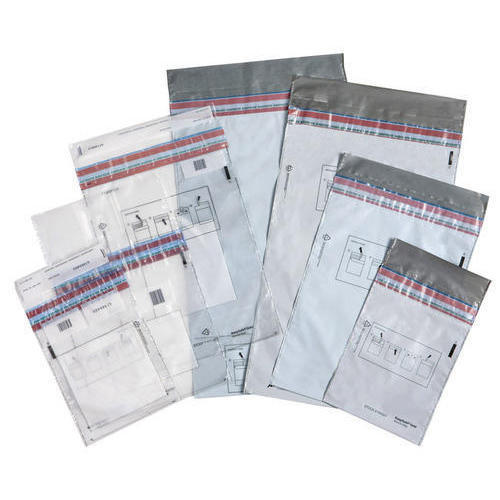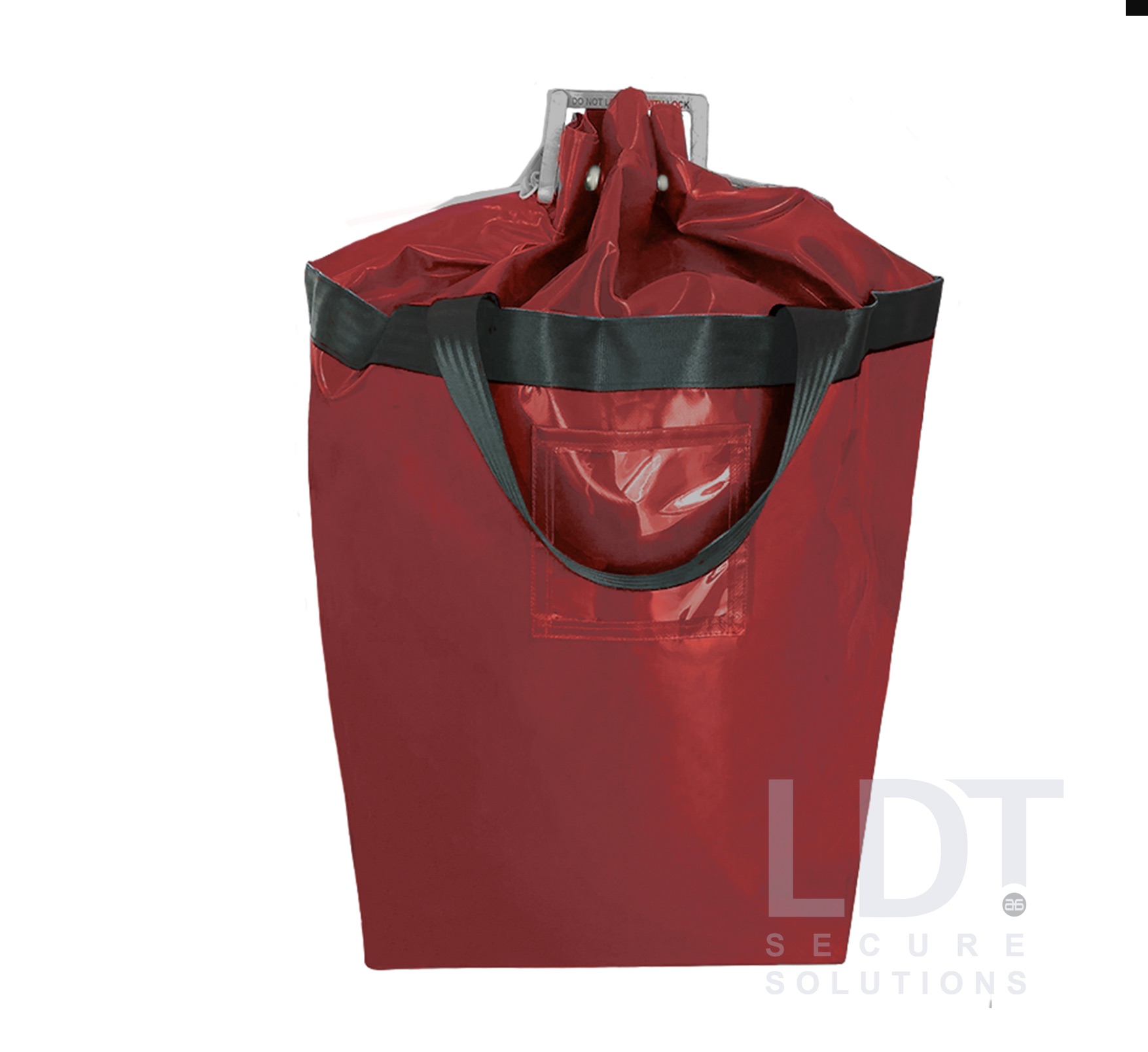Cognitive Automation: The Intersection of AI and Business AI Focused Automation Early Access Sign-Up
Cognitive Process Automation Market Demand, Regional Share, And Forecast To 2033
“The whole process of categorization was carried out manually by a human workforce and was prone to errors and inefficiencies,” Modi said. If you choose to continue using this browser, content and functionality will be limited. You are using an outdated browser that is not compatible with our website content. For an optimal viewing experience, please upgrade to Microsoft Edge or view our site on a different browser. Anomalies or exceptional circumstances — or anything requiring thinking on the fly — are not tasks RPA can handle.
While RPA excels at automating discrete tasks, orchestrating complex workflows or handling unstructured data is a common challenge. IPA offers a mix of tools that help with scaling bottlenecks, such as unstructured data or decision-making. Let’s examine how cognitive automation closes the gaps where traditional approaches, particularly robotic process automation (RPA) and integration tools, fall short. This prevents large organizations from redesigning, replacing, or enhancing the running system. Whereas the transformation process in RPA is very simple and straightforward. Cognitive Robotic Process Automation software robots access the end-user system in the same way that humans do.
Top 10 Cognitive Automation Applications for Businesses in 2023 – Analytics Insight
Top 10 Cognitive Automation Applications for Businesses in 2023.
Posted: Thu, 31 Aug 2023 07:00:00 GMT [source]
Whether it’s classifying unstructured data, automating email responses, detecting key values from free text, or generating insightful narratives, our solutions are at the forefront of cognitive intelligence. We recognize the challenges you face in terms of skill sets, data, and infrastructure, and are committed to helping you overcome these obstacles by democratizing RPA, OCR, NLP, and cognitive intelligence. Roots Automation was founded specifically to bring Digital Coworkers to the market at scale and reduce the barrier to entry to insurance, banking, and healthcare organizations around the globe. You now can streamline and automate your business more efficiently and cost-effectively in a time where every company is striving to get lean and mean. With so many unknowns in the market, profitability and client retention are the goals of nearly every business leader right now.
Cognitive Automation, when strategically executed, has the power to revolutionize your company’s operations through workflow automation. However, if initiated on an unstable foundation, your potential for success is significantly hindered. These were published in 4 review
platforms as well as vendor websites where the vendor had provided a testimonial from a client
whom we could connect to a real person. Embrace the next level of AI to make predictions and data modeling more accurate with our artificial neural networks services.
Pioneers of Cognitive Automation Panel at the Cognitive Automation Summit
Blue Prism’s software provides virtual workforces for automation of manual, rule-based, back office administrative processes by robotic process automation. It currently operates in the Financial Services, Energy, Telco, BPO, and Healthcare sectors. The platform offers call tracking and analytics solutions to its users.
It offers a cloud-based platform for automating data collection & enrichment and uses machine learning technology to integrate & manage automation tools & crowd-sourced workers. It enables businesses to understand customer behavior, automate manual work, monitor corporate actions, extract financially relevant data from loan documentation, and monitor & collect data from websites. It has use cases in information technology, finance, e-commerce, and retail applications. The platform also enables enterprises to convert their paper documents to a digitized file through OCR and automate the product categorization, source data for algorithm training. As an experienced provider of Machine Learning (ML) powered cognitive business automation services, we offer smart solutions and robust applications designed to automate your labor-intensive tasks. With us, you can harness the potential of AI and cognitive computing to enhance the speed and quality of your business processes.
And without making it overly technical, we find that a basic knowledge of fundamental concepts is important to understand what can be achieved through such applications. With light-speed jumps in ML/AI technologies every few months, it’s quite a challenge keeping up with the tongue-twisting terminologies itself aside from understanding the depth of technologies. To make matters worse, often these technologies are buried in larger software suites, even though all or nothing may not be the most practical answer for some businesses.
This higher-level automation tackles more complex tasks using various combinations of technologies, including RPA, machine learning (ML), natural language processing (NLP), and optical character recognition (OCR). Transform your workforce with machine learning-enhanced automation and data integration with our cognitive process automation services. In the face of escalating challenges such as data complexity, heightened customer expectations, and fierce competition, enterprises seek transformative solutions. Enter AI co-workers — intelligent AI assistants, adept at swiftly processing vast data, providing personalized customer support, fostering innovation, and facilitating the evolution of how businesses operate. These invaluable tools navigate the modern business landscape, ensuring efficiency, agility, and continuous improvement.
Data extraction software enables companies to extract data out of online and offline sources. This data is collected from customer reviews for all RPA Software companies. The most
positive word describing RPA Software is “Easy to use” that is used in 3% of the
reviews. The most negative one is “Difficult” with which is used in 1% of all the RPA Software
reviews. 103 employees work for a typical company in this solution category which is 80 more than the number of employees for a typical company in the average solution category.
While IA tools have a broader scope than RPA software, these extras come at a cost. One of the most appealing aspects of automation tools is their proven cost savings. However, considering their relative price tags, RPA software is more accessible to most of the market. However, he suggests we now sit at an “inflection point” within this technological trend, with intelligent automation emerging as the logical progression of RPA. Cognitive Robotic Process Automation refers to tools and solutions that use AI technologies like Optical Character Recognition (OCR), Text Analytics, and Machine Learning.
Now let’s understand the “Why” part of RPA as well as Cognitive Automation. A task should be all about two things “Thinking” and “Doing,” but RPA is all about doing, it lacks the thinking part in itself. At the same time, Cognitive Automation is powered by both thinkings and doing which is processed sequentially, first thinking then doing in a looping manner. RPA rises the bar of the work by removing the manually from work but to some extent and in a looping manner. But as RPA accomplish that without any thought process for example button pushing, Information capture and Data entry. RPA resembles human tasks which are performed by it in a looping manner with more accuracy and precision.
Over time, these digital workers evolve, learning from each interaction and continuously refining their ability to handle complex tasks and scenarios, much like the human brain adapts and learns from experience. The progress organisations have made is impressive considering how quickly intelligent automation technologies evolve. While the perception of the ideal might be changing over time, organisations that are not afraid to embrace digital disruption are more likely to survive and thrive in the world of perpetual technological change.
NLP integrates ruled-based modeling of human language (computational linguistics) with machine learning. It can be used for speech recognition and response, language translation, and automatic text summarization. Chatbots, cell phone speech-to-text, and voice-operated GPS systems are just a few examples of NLP in action. A macro is an automated series of commands that can be used to imitate keystrokes or mouse actions. They’re typically used to perform repetitive computer input, such as when entering data into a spreadsheet or word processing applications, like Microsoft Word and Excel. Organizations are harnessing automation to improve business process speed, accuracy, and efficiency.
Building chatbots that can make changes in other systems is now possible thanks to cognitive automation. We are proud to announce that Grooper software, as well as all software products under the BIS brand, is 100% Made in the USA. Every line of code, every feature, and every update stems from our dedicated team working diligently at our Oklahoma City headquarters.
How AIOps Helps Managed Service Providers Create New Revenue Streams
A cognitive automation tool learns from the decisions you make and adjusts its future recommendations accordingly. What’s more, it constantly reviews the previous actions, looking for repeatable patterns you can automate. These automation tools free your employees’ time from completing routine monotonous tasks and give them the freedom to do more strategic tasks and push forward innovation. By nature, these technologies are fundamentally task-oriented and serve as tactical instruments to execute “if-then” rules. In addition, cognitive automation tools can understand and classify different PDF documents.
It does not include revenues from resales along the supply chain, either further along the supply chain or as part of other products. Please be informed that when you click the Send button Itransition Group will process your personal data in accordance with our Privacy notice for the purpose of providing you with appropriate information. According to Deloitte’s 2019 Automation with Intelligence report, many companies haven’t yet considered how many of their employees need reskilling as a result of automation. Data governance is essential to RPA use cases, and the one described above is no exception. An NLP model has been successfully trained on sufficient practitioner referral data.
Let’s not go further into the technical aspects of machine learning here, but if you’re new to the subject and want to dive into the subject, take a look at our beginner’s guide to machine learning. With substantial leaps in Machine Learning and AI technologies every few months, it’s pretty challenging to keep up with tongue-twisting terminologies on the other side of understanding the depth of technologies. Even sadder, while not the most practical answer for some businesses, the mistake is often made that these technologies are embedded in larger software packages. As a result, deciding whether to invest in robotic automation or wait for its expansion is difficult for businesses.
We are proud to stay that ZIFTM is currently the only
AIOps platform in the market to have a native mobile version! Optical Character Recognition recognizes text with a digital image, such as detecting text in scanned documents. Organizations can use OCR to create electronic versions of physical paper documents.
More sophisticated cognitive automation that automates decision processes requires more planning, customization and ongoing iteration to see the best results. Cognitive automation typically refers to capabilities offered as part of a commercial software package or service customized for a particular use case. For example, an enterprise might buy an invoice-reading service for a specific industry, which would enhance the ability to consume invoices and then feed this data into common business processes in that industry.
Modern RPA tools can automate applications across an enterprise in any department. They can then create bots using a Graphical User Interface & various intuitive wizards. Also, this platform lowers the cost of setup, training, and deployment. In December 2021, Brillio, a US-based IT company acquired Cedrus Digital for an undisclosed amount. With this acquisition, Brillio expands its portfolio in cognitive automation and extends its capabilities in the healthcare, and financial services industries with cloud-native Product Engineering, and cloud security. Cedrus Digital is a US-based company operating in cognitive process automation.
Businesses are increasingly adopting cognitive automation as the next level in process automation. These six use cases show how the technology is making its mark in the enterprise. Cognitive automation may also play a role in automatically inventorying complex business processes.
With UiPath, everyday tasks like logging into websites, extracting information, and transforming data become effortless, freeing up valuable time and resources. Each offers a unique blend of different technologies, approaches, and prices. It is tempting to consider RPA, IPA, and hyperautomation as a continuum.
Automation is a continuous process and cannot be addressed by a single, large transformation program. An automated sub-process can lead to the next level of automation opportunity and can follow a path to higher orders of cognitive computation. An automation excellence center, which continuously evaluates the end-to-end process, will be effective to find automation opportunities and cascade change requests during the process life cycle management.
By empowering businesses to achieve unparalleled levels of efficiency, productivity, and innovation, CPA paves the way for a future where automation is not just a tool but a strategic advantage. By automating the routine tasks that typically take up valuable time, employees can efficiently complete larger and more complicated processes. The faster your company is able to produce these results, the higher the revenue you’ll likely be able to generate. You’ll also be paying less per project by automating the repetitive tasks that take too much time. Cognitive automation describes diverse ways of combining artificial intelligence (AI) and process automation capabilities to improve business outcomes. Its set of capabilities includes human-like analytics skills and sophisticated data mining.
Therefore, the rising demand for cloud computing is driving the growth of the cognitive process automation market. Cognitive automation makes it easier for humans to make informed business decisions by utilizing advanced technologies. These technologies can be natural language processing, text analytics, data mining, semantic technology, and machine learning. RPA uses basic technologies like screen scraping, macro scripts, and workflow automation. Also, RPA does not need coding because it relies on framework configuration and deployment.
They not only handle the automation of unstructured content (think irregular paper invoices) but can interpret content and apply rules ( unhappy social media posts). Language detection is a prerequisite for precision in OCR image analysis, and sentiment analysis helps the Robots understand the meaning and emotion of text language and use it as the basis for complex decision making. High value solutions range from insurance to accounting to customer service & more. RPA is a tool that automates routine, repetitive tasks which are ordinarily carried out by skilled workers.
With cognitive capture technology that you’ll find in Tungsten AP Essentials, speed and efficiency are within easier reach. We stand at the threshold of an exciting era in the world of work, where human cognitive abilities can be supplemented by AI. Digital transformation is rightly a priority for businesses across the developed and developing worlds. Adopting IPA and RPA tools will form a central part of these transitions, enabling unimaginable productivity. While the example of mammographic screening is eye-catching, the benefits of RPA and IPA can apply to several other business management scenarios that require high-quality cognition or decision-making. Once these decisions are reached, they can trigger the downstream actions via RPA, bringing an incredible level of productivity to a wide range of businesses.
By leaving routine tasks to robots, humans can squeeze the most value from collaboration and emotional intelligence. This is why robotic process automation consulting is becoming increasingly popular with enterprises. According to IDC, in 2017, the largest area of AI spending was cognitive applications. This includes applications that automate processes that automatically learn, discover, and make recommendations or predictions.
For instance, the back-office team in a bank receives lending fulfillment request along with instructions and checklist to create accounts manually. Reimagination and transformation of the end-to-end business process will lift and shift operational activities, automate manual tasks and simplify customer communications. This transformation delivers measurable value, namely faster turnaround time, transparency in compliance checks, customer experience at touchpoints and less fatigue in executing transactions.
EY Summit 2020: Lights out Planning at the Cognitive Automation Summit
You can foun additiona information about ai customer service and artificial intelligence and NLP. However, it also increases the complexity of the technology used to perform those tasks, which is bad, argued Chris Nicholson, CEO of Pathmind, a company applying AI to industrial operations. Traditional RPA usually has challenges with scaling and can break down under certain circumstances, such as when processes change. However, cognitive automation can be more flexible and adaptable, thus leading to more automation.
Robotic process automation is killer app for cognitive computing – CIO
Robotic process automation is killer app for cognitive computing.
Posted: Fri, 04 Nov 2016 07:00:00 GMT [source]
The transformation through CPA focuses on reimagined digital communication and delivers value; namely consistency, accuracy, relevancy and latest information through preferred channel. On the other hand, traditional RPA will remove the human labor of checking addresses and help in saving cost. But the digital values delivered, will influence greatly the top-line and the bottom-line of the bank. ACE is a great tool that can help businesses achieve these goals by automating routine tasks so humans can focus on higher-value activities such as creative thinking or problem-solving.
Therefore, increased use of automation technology drives the cognitive process automation market. It is a tool which brings intelligence to information-driven processes and often also known as intelligent process automation. In simple words, cognitive automation uses technology to solve problems with human-like intelligence. Smart work like extracting information from unstructured data and deriving meaningful conclusions is cognitive automation.
A cognitive automation solution may be all that is required to revitalize resources and improve operational performance. As we covered above, cognitive automation is particularly powered by the use of machine learning and its subfield, deep learning. Without getting too technical, we believe that understanding what can be accomplished through such applications requires a basic understanding of fundamental concepts.
This Week In Cognitive Automation: AI Fairness and Scaling Artificial Intelligence for Your Business
“The biggest challenge is data, access to data and figuring out where to get started,” Samuel said. All cloud platform providers have made many of the applications for weaving together machine learning, big data and AI easily accessible. “Cognitive automation is not https://chat.openai.com/ just a different name for intelligent automation and hyper-automation,” said Amardeep Modi, practice director at Everest Group, a technology analysis firm. “Cognitive automation refers to automation of judgment- or knowledge-based tasks or processes using AI.”
- Whereas the transformation process in RPA is very simple and straightforward.
- Advanced algorithms that are trained to find patterns in vast historical data sets so they can provide insights and predictions with a speed and accuracy that are impossible for human researchers.
- Robotics process automation uses software “robots” driven by low-code, ruled-based scripts to automate simplistic, repetitive, and often time-consuming tasks.
- So now it is clear that there are differences between these two techniques.
- Cognitive automation can optimize the majority of FNOL-related tasks, making a prime use case for RPA in insurance.
Where this argument is more robust is in the context of implementation. The road to hyperautomation requires a lot of research into which tasks can be automated. Starting with RPA builds a solid foundation for the types of tasks that can be automated. It allows businesses to build and test automation workflows that they can eventually extend and augment with IPA.
RPA (Robotic Process Automation) is an emerging technology involving bots that mimic human actions to complete repetitive tasks. According to customer reviews, most common company size for rpa software customers is 1,001+ employees. Customers with 1,001+ employees make up 41% of rpa software customers. For an average Automation solution, customers with 1,001+ employees make up 44% of total customers. In the dynamic landscape of technological innovation, the emergence of Cognitive Process Automation (CPA) marks a pivotal moment for businesses striving to enhance efficiency, accuracy, and cost-effectiveness. Let’s delve into the core principles, components, and transformative benefits of CPA, unraveling the intricacies of this groundbreaking concept.
By submitting this form, you agree that you have read and understand Apexon’s Terms and Conditions. To find out how Apexon can help you realize the full benefits of Automation, get in touch today using the section below. Its capabilities, adoption and usage are evolving at an amplified pace. The fashion industry is being re-shaped by the forces of globalization, new buyer expectations, novel product categories and vertical integration. Cognitive Process Automation is an evolved form of RPA, but it’s actually quite different in many ways. The most important thing to understand about CPA is that it’s not just one thing—it includes all of those things.
Whereas, a data scientist’s responsibility is to draw inferences from various types of data. The data scientist then presents them to management in a usable format so that they can make informed decisions. RPA is a technology that uses software robots to mimic repetitive human tasks with great precision and accuracy. RPA is also ideal for processes that do not need human intervention or decision-making. In today’s world, businesses need to be proactive and innovative in order to create value in a sustainable and scalable manner. No business, no matter how small or large, can function efficiently without a proper process management framework.
The software is noninvasive and typically low-code, so it’s easy to build, deploy, and manage. It’s ideal for automating workflows that involve legacy systems that lack APIs, virtual desktop infrastructures (VDIs), or database access. This category was searched on average for
6.5k times
per month on search engines in 2023.
Such systems require continuous fine-tuning and updates and fall short of connecting the dots between any previously unknown combination of factors. In another example, Deloitte has developed a cognitive automation solution for a large hospital in the UK. The NLP-based software was used to interpret practitioner referrals and data from electronic medical records to identify the urgency status of a particular patient.
Employ your first Digital Coworker in as little as three weeks and see your break-even point in as little as four months. Read “The Nail in the ‘I Can’t do Automation’ Coffin”Want to learn more about Digital Coworkers in your business? A tier-1 bank wanted to move cognitive process automation tools away from traditional discovery methods, which were estimated to take several months while carrying a risk of being error-prone due to data subjectivity. Instead, the bank’s leadership decided to take a data-centric approach to business process analytics.
Each type of software or tool being used in intelligent process automation comes equipped with advanced security measures. Companies can rest assured that their data is highly protected and has a much lower risk of being placed into the wrong hands. How does cognitive automation provide a step-change in efficiency by focusing on decision making? Even today, there are decisions that are not being made on a daily basis.
The following factors contribute to cognitive automation being the next significant improvement for enterprise-level operations. The RPA software includes an analytical suite that evaluates the robot workflows’ performance. The analytical suite also helps to monitor and manage automated functions.
Transform your data into strategic assets and capitalize on opportunities with our data engineering services. Rigorously testing the solution with random data to verify the model’s accuracy, and making necessary adjustments based on the results. Ready to significantly increase your productivity, reduce operational costs, and free up resources to concentrate on strategic business growth? You might’ve heard of a Digital Workforce before, but it tends to be an abstract, scary idea. A Digital Workforce is the concept of self-learning, human-like bots with names and personalities that can be deployed and onboarded like people across an organization with little to no disruption. Roots Automation empowers global leaders with an integrated, intelligent platform to revolutionize the way work is managed.
Cognitive automation works by simulating human thought processes in a computerized model. It utilizes technologies like machine learning, artificial intelligence, and natural language processing to interpret complex data, make decisions, and execute tasks. AI supplements RPA with cognitive technologies like natural language processing (NLP), optical character recognition (OCR), and computer vision, thus achieving end-to-end automation. Intelligent automation platforms play a crucial role in optimizing an automated process, as they provide valuable analytics, spot and resolve bottlenecks, and make improvement recommendations. Companies looking for automation functionality will likely consider both Robotic Process Automation (RPA) and cognitive automation systems. While both traditional RPA and cognitive automation provide smart and efficient process automation tools, there are many differences in scope, methodology, processing capabilities, and overall benefits for the business.
In a world overflowing with data, traditional automation tools often fall short. They excel at following predefined instructions but struggle when faced with ambiguity, unstructured information, or complex decision-making. This is where cognitive automation enters the picture, transforming the way businesses operate.
Role-based security capabilities can be assigned to RPA tools to ensure action-specific permissions. All automated data, audits, and instructions that bots can access are encrypted to prevent malicious tampering. The enterprise RPA tools also provide detailed statistics on user logging, actions, and each completed task.
Overall, cognitive software platforms will see investments of nearly $2.5 billion this year. Spending on cognitive-related IT and business services will Chat GPT be more than $3.5 billion and will enjoy a five-year CAGR of nearly 70%. RPA functions similarly to a data operator, working with standardized data.
You can instruct the robot to keep trying at particular intervals until it connects with the database. However, once a maximum number of tries has been reached, it will throw a business exception so a manual worker can remedy the situation. This article will explore the differences and commonalities of both disciplines and show where they intersect and overlap. We will also share some intelligent automation examples alongside industry use cases.
The product modules include intelligent document processing, data capture, process intelligence, and optical character recognition. It assists customers in optimizing their business operations and action information by converting it into understandable knowledge. It employs artificial intelligence technologies for text recognition, PDF conversion, and data capture. It also offers a cloud platform for process discovery, process mining, and task mining for managing operation efficiency. With Comidor intelligent process automation tools and software, you can transform your business processes and produce unbeatable results.
You can use natural language processing and text analytics to transform unstructured data into structured data. He sees cognitive automation improving other areas like healthcare, cognitive process automation tools where providers must handle millions of forms of all shapes and sizes. Employee time would be better spent caring for people rather than tending to processes and paperwork.












